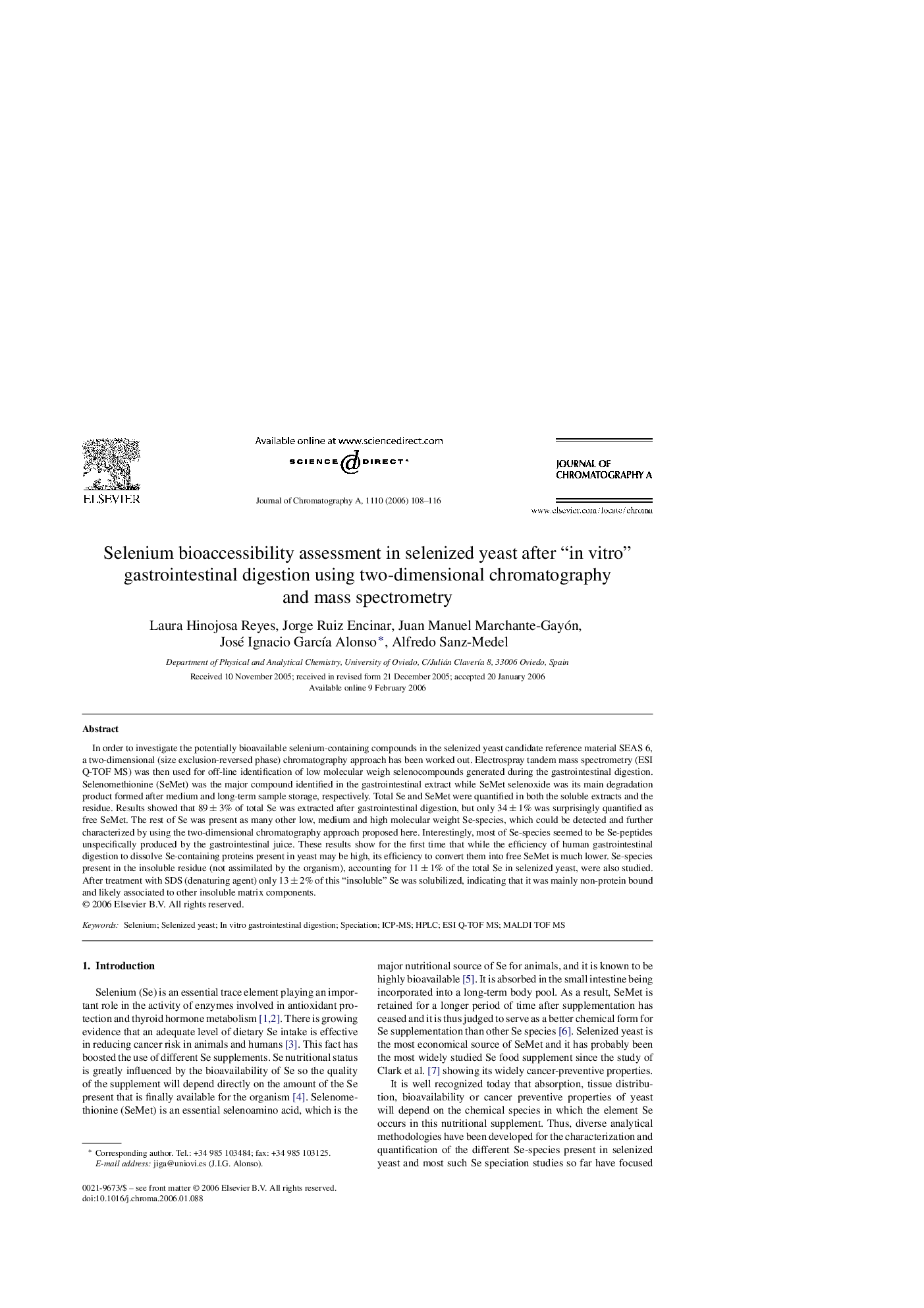| Article ID | Journal | Published Year | Pages | File Type |
|---|---|---|---|---|
| 1210410 | Journal of Chromatography A | 2006 | 9 Pages |
In order to investigate the potentially bioavailable selenium-containing compounds in the selenized yeast candidate reference material SEAS 6, a two-dimensional (size exclusion-reversed phase) chromatography approach has been worked out. Electrospray tandem mass spectrometry (ESI Q-TOF MS) was then used for off-line identification of low molecular weigh selenocompounds generated during the gastrointestinal digestion. Selenomethionine (SeMet) was the major compound identified in the gastrointestinal extract while SeMet selenoxide was its main degradation product formed after medium and long-term sample storage, respectively. Total Se and SeMet were quantified in both the soluble extracts and the residue. Results showed that 89 ± 3% of total Se was extracted after gastrointestinal digestion, but only 34 ± 1% was surprisingly quantified as free SeMet. The rest of Se was present as many other low, medium and high molecular weight Se-species, which could be detected and further characterized by using the two-dimensional chromatography approach proposed here. Interestingly, most of Se-species seemed to be Se-peptides unspecifically produced by the gastrointestinal juice. These results show for the first time that while the efficiency of human gastrointestinal digestion to dissolve Se-containing proteins present in yeast may be high, its efficiency to convert them into free SeMet is much lower. Se-species present in the insoluble residue (not assimilated by the organism), accounting for 11 ± 1% of the total Se in selenized yeast, were also studied. After treatment with SDS (denaturing agent) only 13 ± 2% of this “insoluble” Se was solubilized, indicating that it was mainly non-protein bound and likely associated to other insoluble matrix components.
